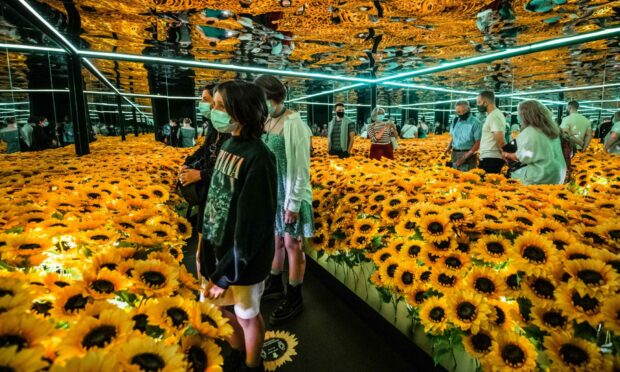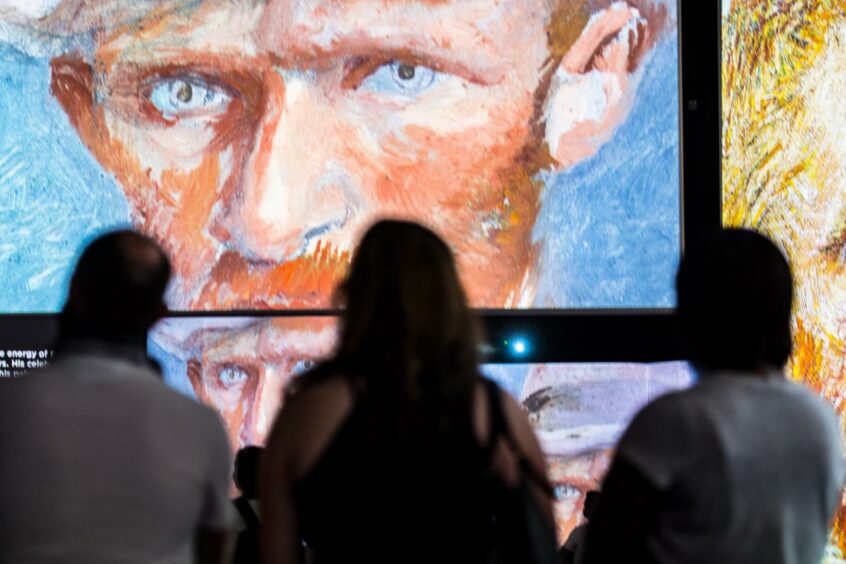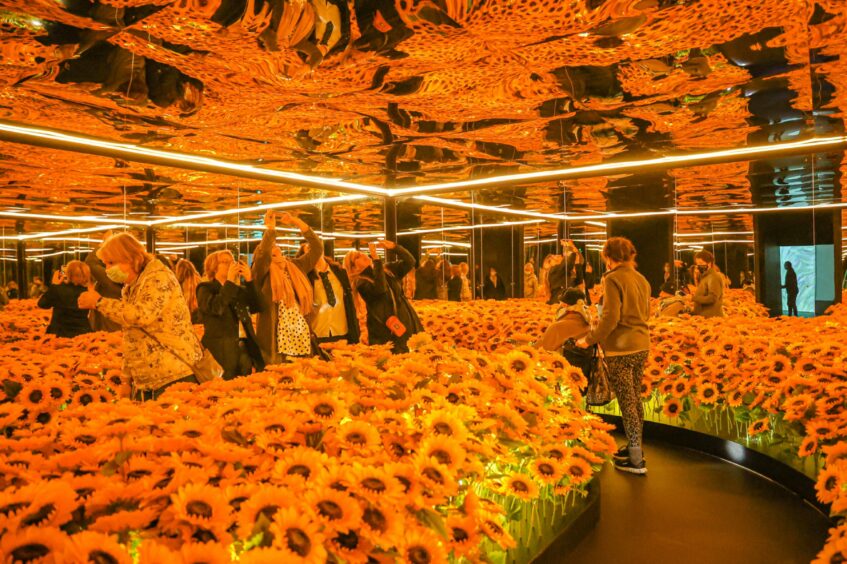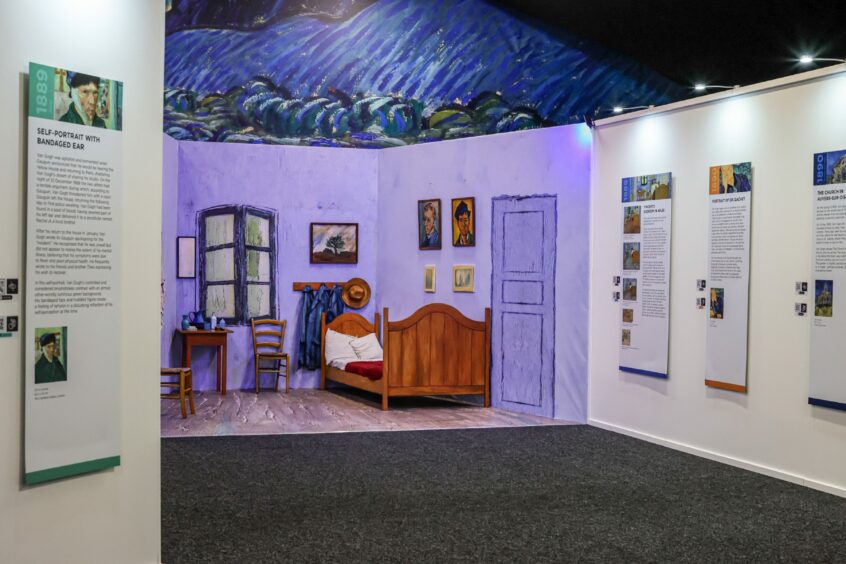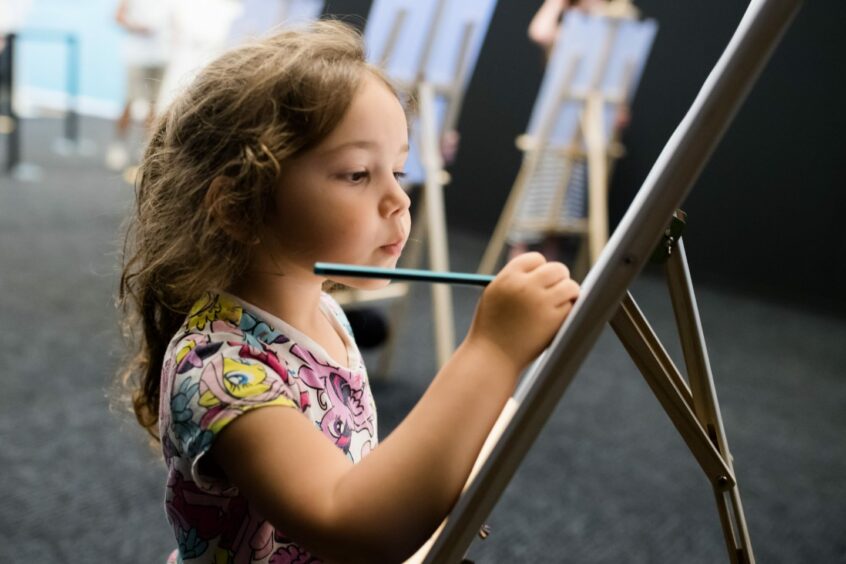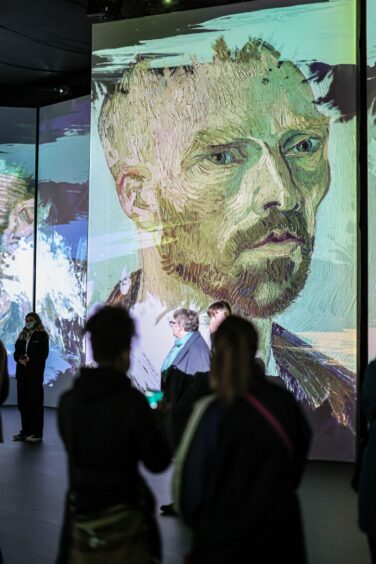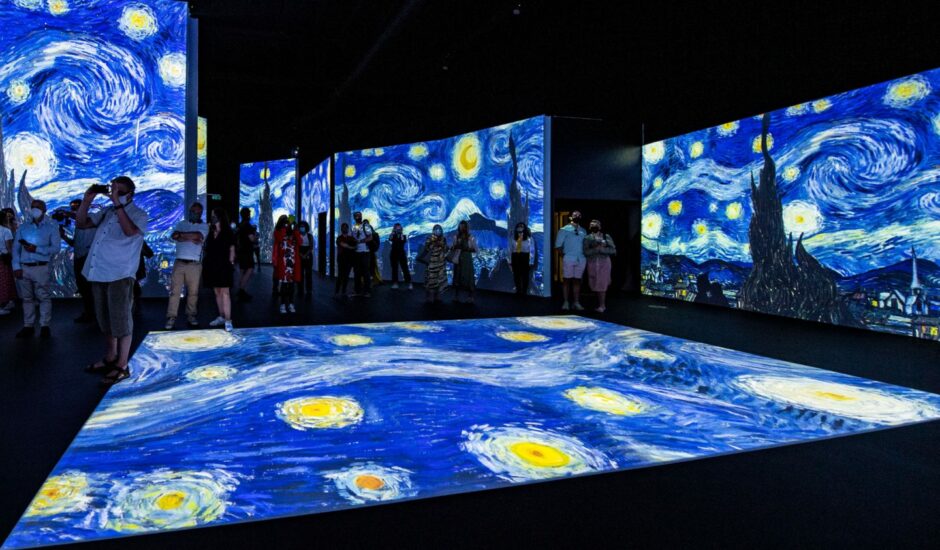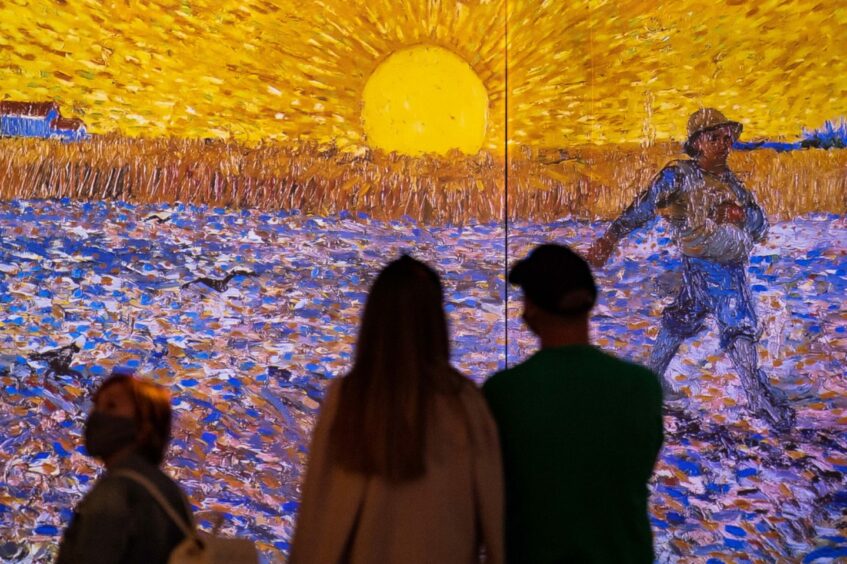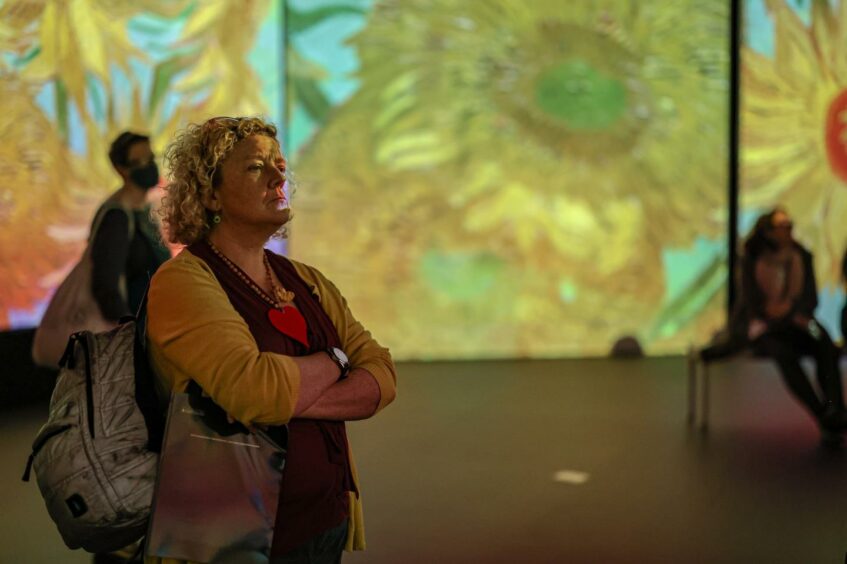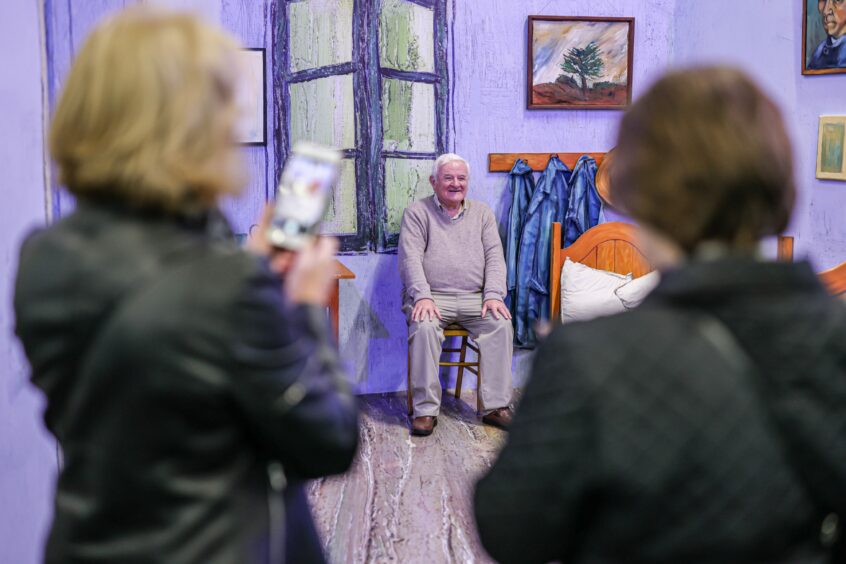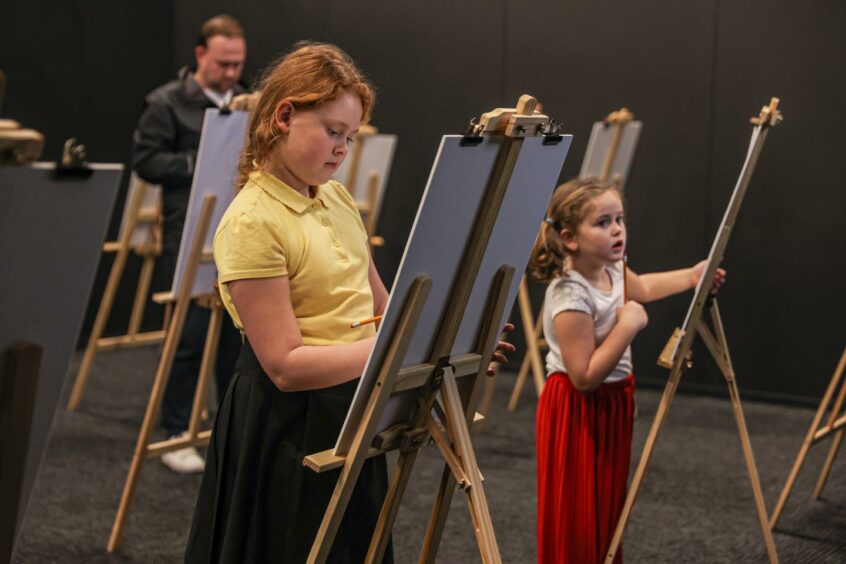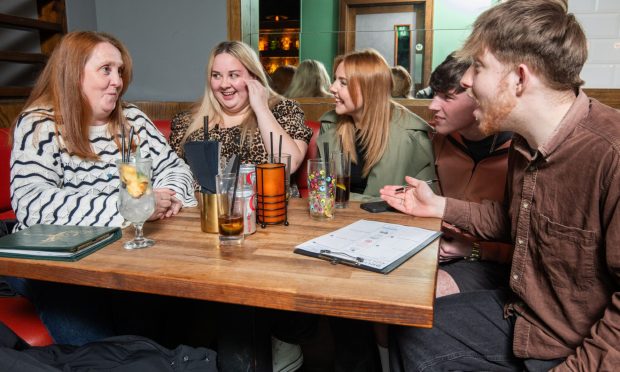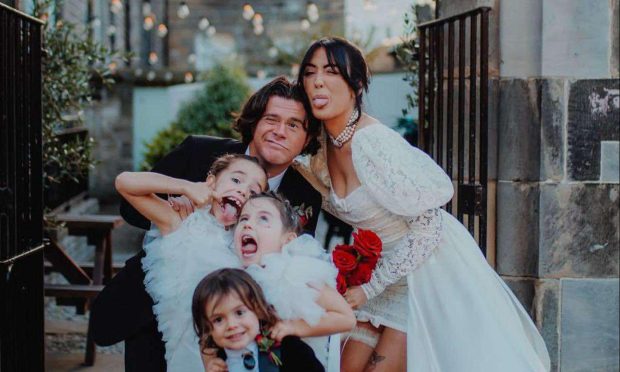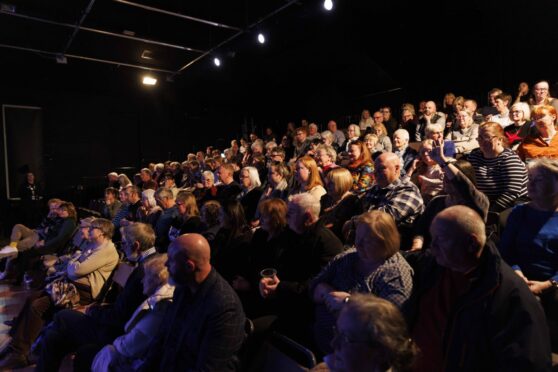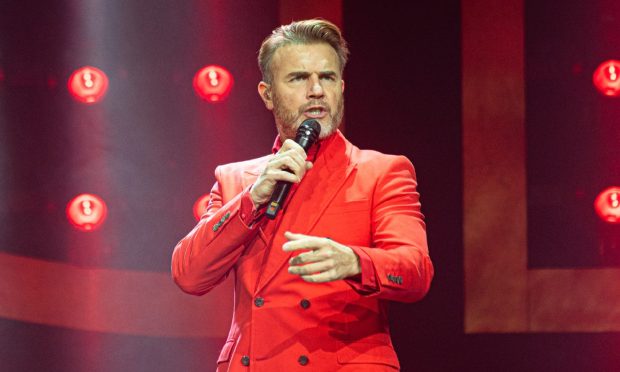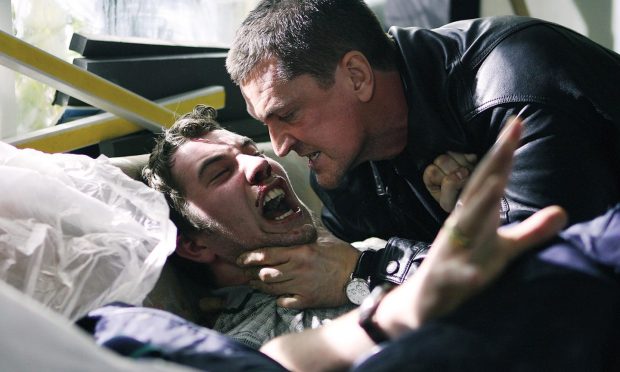On the day that Russian forces invaded Ukraine, a woman was hailed on social media after she confronted a heavily armed Russian soldier and offered him sunflower seeds – so that flowers would grow if he died there on Ukrainian soil.
“You’re occupants, you’re fascists,” she shouted, standing about a metre from the soldier.
“Take these seeds and put them in your pockets so at least sunflowers will grow when you all lie down here”.
As the Russian invasion continues, displaying sunflowers has become one of the many ways the world is showing solidarity for the Ukrainian people.
Symbol of peace
Sunflowers – or soniashnyk as they are known in Ukrainian—have been grown in Ukraine since the mid-18th century.
Ukraine and Russia supply up to 80% of the world’s sunflower oil exports.
In June 1996, to celebrate Ukraine giving up nuclear weapons, US, Russian and Ukrainian defence ministers planted sunflowers in a ceremony at southern Ukraine’s Pervomaysk missile base.
Almost 26 years after that ceremony, sunflowers remain symbols of peace.
In recent weeks, their symbolism has been taken on by artists around the world.
They’ve been posting sunflower art with hashtags like #sunflowersforukraine to show solidarity with the besieged nation.
Now, in a quirk of coincidental fate completely unrelated yet somehow appropriate given events in Eastern Europe, sunflower art by the world’s most famous sunflower artist is at the centre of an immersive art exhibition opening in Edinburgh.
Van Gogh Alive
Van Gogh Alive, which has been viewed by over eight million people in 75 cities worldwide, runs in a 15,000 ft2 purpose-built venue at Festival Square from March 17 to July 17.
Organisers say it’s not an art exhibition in the traditional sense.
Instead, it’s an immersive, multi-sensory art experience combining high-definition projections of Vincent van Gogh’s paintings with digital surround sound and aromas of Provence.
Imagery and animations are projected at a scale that offers visitors the ability to see the details of the artist’s work like never before.
Van Gogh Alive is coming to to Edinburgh! 🌻
It's time to experience art in a spectacular new way, step inside Vincent van Gogh's paintings at Van Gogh Alive from 17 March to 17 July 2022.
Tickets on sale NOW! Book today: https://t.co/l0QbcFyS7H pic.twitter.com/oor97T1oj0
— Van Gogh Alive UK (@VanGoghAliveUK) December 14, 2021
More than 3,000 images transform each surface.
‘World-class’ experience
In an interview with The Courier, Van Gogh Alive projects director John Carrigan described it as an “amazing” world-class experience.
Having previously visited Birmingham’s Hippodrome, London’s Kensington Gardens and most recently MediaCity’s Piazza in Greater Manchester, it had been a “huge success” with just under 175,000 people through the doors in Manchester between October and February alone.
“Australian company Grande Experiences own the intellectual rights to Van Gogh Alive,” explains John, whose background lies in event management.
“They’ve had this running for 10/12 years. We run it under licence from Grande.
“Believe it or not the world premier was originally potentially going to be in Edinburgh.
“At the last minute it fell through and went to Singapore instead.
“It’s taken a while to come back!”
John explains that blockbuster multi-sensory experience completely immerses visitors into the life and work of Vincent van Gogh.
Visitors travel through periods of his life that defined him as an artist.
Iconic works presented include Starry Night, Sunflowers and lesser-known paintings that were inspired by his love of Japanese woodprints.
State-of-the-art SENSORY4 immersive gallery technology displays Van Gogh’s work in a kaleidoscope of colour. Detail is so good, it’s possible to see individual brushstrokes.
Set to an evocative classical score that is delivered via a high-fidelity 3D sound system, the combination of sound, visuals and aromas of Provence give visitors the sensation of walking right into his paintings as if they are “living and breathing”.
“When people come in, they’ll enter a reception area where we have interpretive space and information about Van Gogh, his life, his painting career, and what’s affected him at various stages of his life and his painting career,” says John.
“From there, people enter and experience the force of his works that are displayed and projected in the immersive gallery.
“We’ve recreated his bedroom, for example. There’s an opportunity for selfie opportunities in his bedroom.
“Throughout the whole experience we encourage people to take videos and photographs – whatever suits them.
“We don’t restrict that at all. We’re more than happy for people to post and take pictures.
“Then we introduce people to the gallery space which is where we have 750 square metre floor space, 6.5 metre high ceilings and 30 six-metre high screens that we project on to.
“You really do get a sense of space and smell as well.”
Multi-media
John explains that the projections and soundtrack run on a 45-50 minute loop – although visitors can spend as much time as they want.
Information within the gallery and on the projections gives more information about what’s behind some of the paintings and what influenced Van Gogh at that time.
This includes his struggles with mental health and how that fed into his art.
There’s a second opportunity for selfies in the sunflower room where a mirrored room gives an “infinity view”.
When visitors leave the main gallery space, there’s then an interactive area which includes a constantly running tutorial.
Here there will be easels and art equipment with information about how to construct a basic painting or drawing including perspectives, angles and depths.
That’s directed as much at adults as it is young people.
“The whole experience really does span the generations,” he adds.
Who was Vincent van Gogh?
Born in the Brabant village of Zundert on March 30, 1853, Vincent van Gogh was 27-years-old before he decided to become an artist.
However, according to the Vincent van Gogh Museum in the Netherlands, when the decision came it not only changed his life but also art history forever.
The second child of Protestant Minister Theodorus van Gogh and Anna Carbentus (their first son also called Vincent had been stillborn on the same date exactly a year earlier), Vincent grew up with five younger siblings.
The future artist developed a great love of nature through frequent family walks in the Zundert area.
Attending boarding school aged 11 and secondary school aged 13, from where he quit school half-way through his second year, there was little sign of any special artistic talent.
He stepped into the art world aged 16 when his uncle found him a job as a trainee at the international art dealer Goupil & Cie.
‘Peasant painters’
Working in The Hague and London, he visited and admired the works of ‘peasant painters’ such as Francois Millet and Jules Breton. He became increasingly religious after being transferred to Paris in 1875.
However, despite his interest in art, he was less and less enamoured with his job at the art firm. The feeling was mutual and in 1876, he was dismissed.
Returning to England, Vincent worked for a spell as an unpaid assistant teacher at a boys’ boarding school in Ramsgate.
This was followed by a salaried position at a private school near London.
With little prospects, however, his father persuaded him during a visit home not to return to England.
Finding a job at a bookshop near Rotterdam, he made plans to study theology.
When it became clear he lacked discipline to study, however, he abandoned these plans and became a lay preacher in the Borinage mining region of Belgium.
Here, he shared the miners’ poverty and was nicknamed ‘The Christ of the Coal Mine’. However, it didn’t work out.
Having often included sketches in letters to his brother Theo, it was his brother who suggested to him he concentrate on art. Surrounding himself with artists, his brother sent him money to get by.
He took painting lessons from a cousin by marriage, the celebrated artist Anton Mauve.
However, his parents were not happy when he moved to Brussels. They saw the life of an artist as a “social failure”.
It didn’t help when he fell in love with his widowed cousin Kee Vos.
Matters only got worse in 1882 when van Gogh met prostitute Sien Hoornik who became his model and lover.
Despite being pregnant and her already having a five-year-old daughter, Vincent felt sorry for her and was determined to take care of her. They lived together, until the relationship eventually broke off.
Mental health issues
Vincent later moved in with his parents in Nuenen. There, he painted farmers and weavers and started working on The Potato Eaters.
Later, in the south of France, Vincent went through a turbulent period where he fell ill and famously cut off his ear.
He wrapped it in newspaper and presented it to a prostitute in the nearby red-light district.
During this period he kept working and even made some of his most famous artwork.
His mental health fluctuated sharply thereafter, and at one point he had himself voluntarily admitted to a psychiatric hospital in Saint-Remy.
It was concerns for his financial future on top of his illness, however, that led him to take his own life in July 1890.
His legacy was a large body of art works – over 850 paintings and almost 1300 works on paper.
It’s the significance of mental health issues which has seen Van Gogh Alive appoint the Scottish Association for Mental Health (SAMH) as its official charity partner for the Edinburgh event.
What would Van Gogh think?
John Carrigan thinks that if van Gogh could see the interactive displays of his work today, he’d be “absolutely amazed”.
“Obviously he struggled to make his living and sell his works,” says John.
“But I think he’d be amazed at the appeal of his work now and its reach to such a wide audience.
“I hope that would be the case anyway.
“Obviously he’s one of the most successful artists around in terms of his work and variety and awareness.
“But I think we all love a story. His mental health issues resonate without a doubt with the current climate.
“Going through Covid, and restrictions and particularly young people and mental health. It’s all relevant.
“That’s why we’ve made the Scottish Association for Mental Health our charity partner.
“As part of that we’ll take donations on their part at the point of sale and will also have use of credit card tap stations around the experience.
“We will also hand over the experience for SAMH to have a charity evening where they can invite people and hopefully have a fundraising process for them.”
Global audience
Bruce Peterson, owner of Grande Experiences, says: “After mesmerising a global audience of over eight million people and selling-out cities all over the world, including Rome, Sydney and of course our recent location at Kensington Gardens in London, we’re incredibly excited to be bringing Van Gogh Alive to Scotland’s capital city.
“This is an unforgettable cultural experience for all the family.”
Lyndsey Jackson from the Fringe Society’s ticketing agency, 180 Box Office adds: “We are delighted to be the ticketing partnering for Van Gogh Alive.
“This is such a prestigious event, we are sure Scottish audiences will embrace having such an impressive, immersive digital art experience in Edinburgh which appeals to many different communities from families, schools, tourists and culture vultures, through to Van Gogh aficionados.
“Our experience of managing the Fringe’s Box Office annually and a host of other events through the year will ensure a smooth customer journey for all ticket purchasers, which is all part of having a great day out.”
Ticket information
Controlled visitor capacities and managed visitor flow mean visitors can easily respect any Covid-19 guidelines and enjoy the experience safely.
A schools engagement programme is also encouraging schools to make trips.
Tickets are on sale at https://vangoghaliveuk.com/edinburgh
Prices are £22/20 (concessions) for adults and £15 for children, with school group discounts available and Under 5’s are free of charge.
